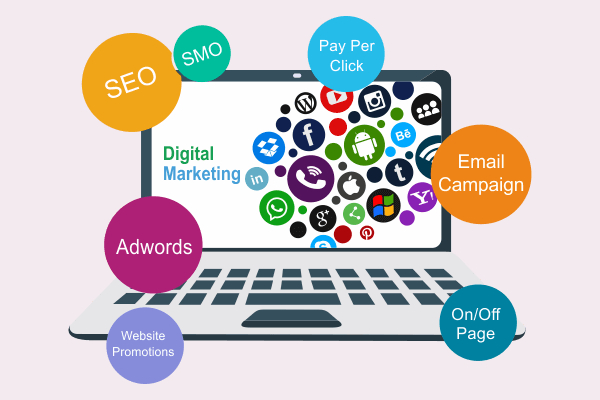In the world of digital marketing, native advertising has emerged as a highly effective strategy for brands to promote their products and services without disrupting the user experience. Unlike traditional ads, which are often intrusive, native ads blend seamlessly with the content around them, making them more engaging and less likely to be ignored. This article explores the benefits of native advertising, how it works, and tips for effectively blending content and promotion to capture your target audience’s attention.
What is Native Advertising?
Native advertising refers to paid ads that match the look, feel, and function of the media format in which they appear. Unlike banner ads or pop-ups, native ads are designed to integrate with the surrounding content, making them appear more like editorial content than advertisements. They are typically found on social media platforms, content recommendation widgets, and news sites, where they appear as promoted stories, in-feed social ads, or sponsored content.
The goal of native advertising is to provide value to the reader while promoting a product or service. Because these ads fit naturally into the user’s experience, they tend to be less disruptive and more likely to be viewed and engaged with. When done correctly, native advertising can create a win-win scenario: the audience receives relevant, valuable content, and the brand gains visibility without being intrusive.
Why Native Advertising Works
Increased Engagement
One of the key reasons native advertising is effective is its ability to capture the user’s attention without interrupting their experience. Since native ads blend into the content, users are more likely to engage with them compared to traditional display ads. Research shows that native ads generate a higher click-through rate (CTR) than display ads, as they appear more trustworthy and relevant.
Moreover, because native ads often take the form of articles, videos, or infographics, they offer value beyond mere promotion. Audiences are more likely to consume and share content that informs, entertains, or educates them, making native ads a more engaging option.
Builds Trust and Credibility
Another advantage of native advertising is its ability to build trust. Traditional ads are often met with skepticism, as users recognize they are being sold to. Native ads, on the other hand, feel more organic and are often viewed as part of the website’s editorial content. When audiences find value in the content, they are more likely to trust the brand behind it.
For instance, if a fitness brand publishes a native ad on a health website featuring workout tips and advice, readers are likely to perceive the content as helpful and informative. This positive association can enhance the brand’s credibility and lead to stronger customer relationships.
Better Targeting and Personalization
Native advertising allows brands to target specific audiences with personalized content. By leveraging data from user behavior and preferences, advertisers can create native ads that resonate with the interests and needs of their target audience. Platforms like Facebook and Instagram enable advertisers to refine their native ads based on demographics, location, and interests, ensuring the right content reaches the right people.
This targeted approach not only improves engagement but also increases the chances of conversion, as users are more likely to respond to content that speaks directly to their needs or desires.
Types of Native Advertising
In-Feed Ads
In-feed ads appear within the content stream of a social media platform, news website, or blog. They are designed to look like part of the feed, often taking the form of articles, videos, or images. These ads blend seamlessly with organic content, making them less intrusive and more likely to be engaged with.
Sponsored Content
Sponsored content refers to articles, videos, or other forms of media that are created by a brand but appear on a third-party website as editorial content. This type of native advertising is designed to provide value to the reader while subtly promoting the brand. Sponsored content is popular on news sites and blogs, where it can inform, entertain, or educate the audience while promoting a product or service in a non-obtrusive way.
Content Recommendation Widgets
Content recommendation widgets appear at the bottom of articles or blog posts, typically labeled as “Recommended for You” or “You May Like.” These widgets include links to sponsored content that is designed to be relevant to the reader’s interests. While these ads are paid placements, they mimic editorial recommendations, making them more likely to be clicked.
How to Create Effective Native Ads
-
Prioritize Value Over Promotion
The key to successful native advertising is creating content that delivers value to the audience. Focus on providing useful information, entertainment, or solutions to the reader’s problems. The promotional aspect should be secondary and subtle, allowing the content to shine. For example, a skincare brand might create a native ad that educates readers on winter skincare routines, subtly recommending their products as part of the solution.
-
Align with the Platform’s Tone and Style
To ensure your native ad blends seamlessly with the platform, it’s crucial to align with the tone, style, and format of the website or social media platform. Take the time to study the content on the platform where your ad will appear and mimic its style. Whether it’s casual, informative, or authoritative, the tone of your ad should match the surrounding content to avoid standing out as an advertisement.
-
Be Transparent with Your Audience
While native ads are designed to blend in with content, transparency is essential. Make sure your audience is aware that the content is sponsored or promoted by your brand. Most platforms have guidelines for clearly labeling native ads with tags like “Sponsored” or “Promoted.” Honesty fosters trust, and readers are more likely to engage with content when they know its purpose.
-
Use Compelling Visuals
Visual content plays a vital role in attracting attention to native ads. High-quality images, engaging videos, and well-designed infographics can make your ad more appealing and increase engagement. Ensure that the visuals align with the content and are relevant to the audience’s interests.
Conclusion
Native advertising has proven to be an effective way for brands to promote their products and services while maintaining a seamless and engaging user experience. By blending content and promotion effectively, brands can increase engagement, build trust, and drive conversions. When crafting native ads, remember to prioritize value, align with the platform’s style, and be transparent with your audience. By doing so, you’ll create native ads that resonate with your target audience and deliver long-lasting results.



